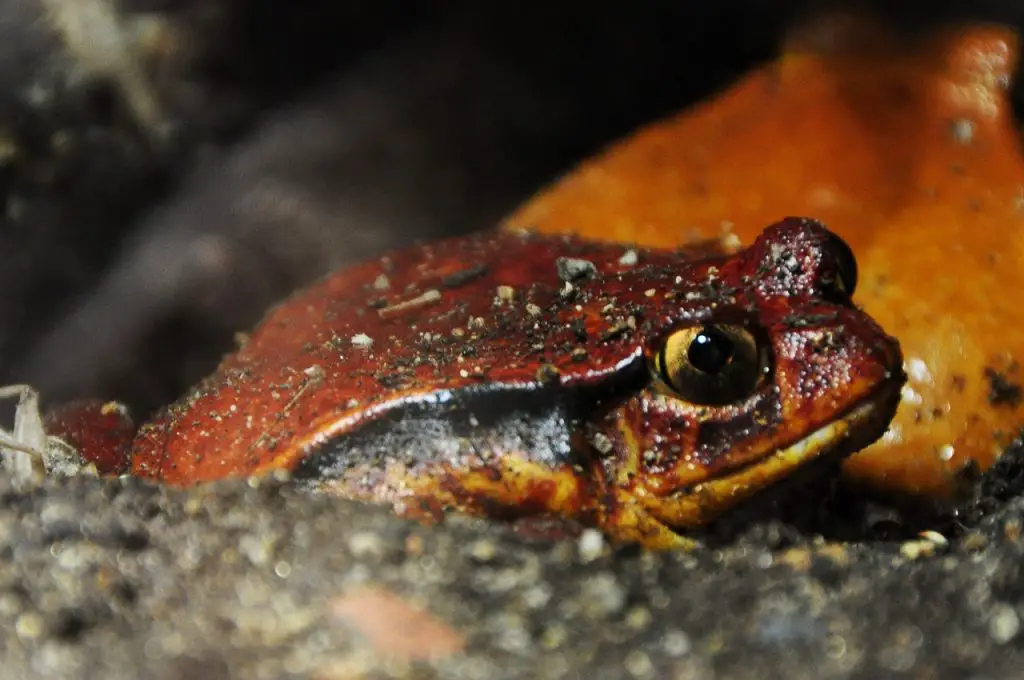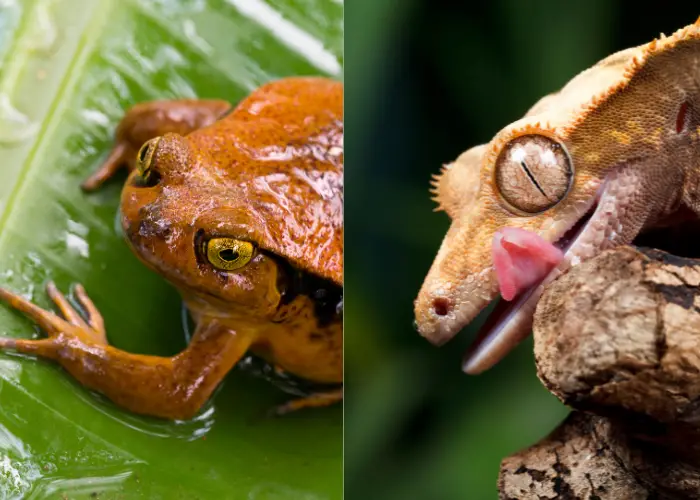Introduction
When setting up a vibrant and engaging vivarium, it’s natural to wonder about the kinds of animals that can cohabitate peacefully and create a stimulating environment. The question of “Can tomato frogs live with crested geckos” is one that intrigues many hobbyists and professionals alike. Crested geckos, known for their distinctive appearance and easy-going nature, are a popular choice among reptile enthusiasts. On the other hand, tomato frogs carry a fascinating visual appeal with their bright red coloration. Before diving into the specifics, it is essential to understand the individual needs, habits, and preferences of both these species to gauge whether they can share a living space harmoniously. Stay tuned as we unravel the complexities and offer insights to help you create a healthy and vibrant habitat for these captivating creatures.

Can They Coexist Peacefully?
No, tomato frogs and crested geckos should not be housed together. Though it might be tempting to create a vivarium with various vibrant species, it is vital to prioritize the health and well-being of the animals involved. The requirements of these two species are quite different, and meeting the needs of both in a single enclosure can be challenging.
While crested geckos are arboreal creatures, originating from New Caledonia, and spending most of their time in trees, tomato frogs are native to Madagascar and are primarily ground-dwellers. This difference in natural habitats can create a stressful environment for both species, reducing their overall health and lifespan.
Meeting Individual Habitat Requirements
Understanding the different habitat requirements of these species can further explain why they shouldn’t live together. Tomato frogs prefer a more aquatic environment, which retains moisture and has a considerable amount of water bodies. On the flip side, crested geckos require a habitat with lower humidity levels and plenty of vertical space to climb, which mimics their natural arboreal lifestyle.
Moreover, the diet and feeding patterns of the two species are different. While both are insectivores, crested geckos have shown a preference for fruit-based diets as well. This differentiation in diet can make feeding time complex, possibly leading to competition and stress.

Health and Safety Concerns
A significant factor to consider is the potential health and safety concerns that can arise from housing these species together. Tomato frogs secrete a white substance when threatened, which can be harmful to other animals, including crested geckos.
Furthermore, there is always a risk of one species preying on the other, as crested geckos might see smaller frogs as potential prey, leading to a dangerous living situation. To ensure the safety and health of both species, it is recommended to house them separately and enjoy their unique behaviors in their respective, species-appropriate environments. Keeping them in separate enclosures allows for specialized care, reducing the risk of illness and promoting a higher quality of life for both species.
Conclusion
In conclusion, while the thought of a vivid and interactive vivarium featuring both tomato frogs and crested geckos can be appealing, it is not advisable to house these species together due to their differing habitat needs and potential health risks. Ensuring the wellbeing of both species involves respecting their individual requirements and providing separate living spaces tailored to their unique lifestyles and needs.

FAQ
Can crested geckos live with other amphibians?
Generally, it is advised against keeping crested geckos with other amphibians to prevent potential stress, illness, and predation risks. It is always best to research thoroughly before introducing different species in the same living environment.
What is the optimal habitat for a tomato frog?
Tomato frogs thrive in humid environments that mimic their natural habitat in Madagascar. They prefer areas with ample water bodies and a moist substrate to maintain their skin’s health.
Do tomato frogs and crested geckos have similar diets?
While both species are insectivores, their diets can differ. Crested geckos often enjoy a varied diet that includes fruits, while tomato frogs primarily stick to a diet rich in insects.
What are the signs of stress in crested geckos and tomato frogs?
Signs of stress in these animals can include reduced appetite, lethargy, and frequent hiding. Monitoring their behavior closely can help in identifying any stress-related issues early on.
Can crested geckos and tomato frogs share the same humidity levels?
No, crested geckos and tomato frogs have different humidity level requirements. Tomato frogs prefer a more aquatic and humid environment, whereas crested geckos require moderate humidity levels and ample vertical space for climbing. It’s crucial to tailor their habitats to meet these specific needs to ensure their wellbeing.


